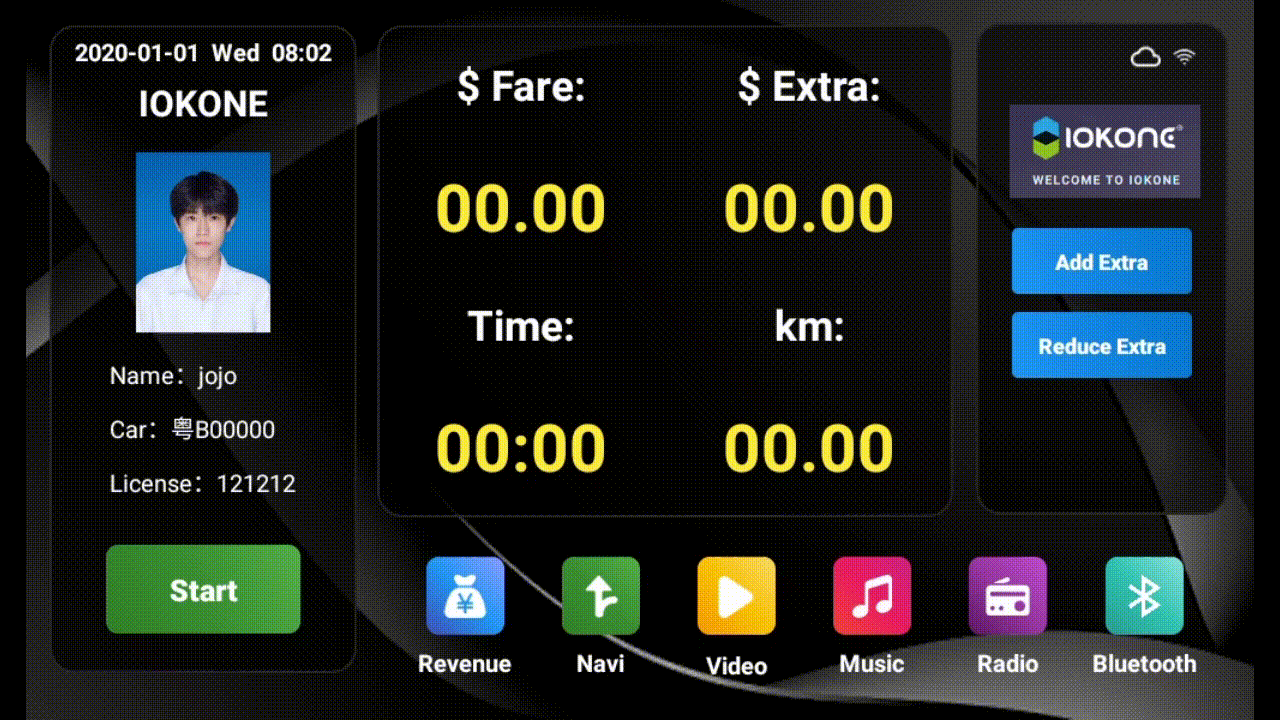Taxi Terminal Function Introduction
Taxi terminal system is a kind of equipment which integrates many functions and is used for the operation and management of taxi. Its main functions include positioning, pricing, and operation data recording, among others. Make taxi operation more intelligent, safe and efficient, improve the passenger experience, and enhance the level of management.

Taxi Terminal Main Functions
Vehicle location
High precision
Customizable map selection
Upload real-time positioning data
Pricing
Custom pricing model
Multiple pricing methods
Customizable pricing rules
Revenue data
Shift revenue record
Historical revenue records
Real-time upload
Vehicle Location

Through positioning methods such as GPS, the terminal network is able to determine the vehicle’s location and These methods enhance the accuracy of tracking, which further optimizes overall performance. Based on this information, it can plan a route from the starting point to the final destination in real time. Consequently, this enables efficient and dynamic route planning throughout the journey.

Pricing
Taxi pricing functions calculate fares based on distance, time, and regional rules, including starting price, mileage, time charges, surcharges, and e-payment. These methods ensure fare transparency and fairness across different areas.

Revenue Data


The revenue page has two modules. The left is the navigation module: shift revenue, historical revenue, shift summary, and the right is the information display module: total amount, surcharge, time, mileage, and number of runs.

The on-duty data displays the pick-up and drop-off information, ride time, mileage, surcharge, and total amount for passengers picked up during the current shift.

The historical data displays the pick-up and drop-off information, ride time, mileage, surcharge, and total amount for all passengers picked up.

The shift summary shows the driver’s check-in and check-out times, the number of passengers picked up and the total amount paid. Clicking on a day’s data will jump to the corresponding day’s revenue data summary data.

Taxi Terminal’s Account Login Commuting and Clocking Function It is an attendance management system based on intelligent terminal devices, which is usually used for the work management of taxi drivers. The main purpose of this function is to help the management company to record the driver’s working hours, clock-in and clock-out, as well as to track the driver’s commuting time.
Other Functions Of the taxi terminal
Moreover, it is equipped with a variety of additional functions, such as entertainment, video surveillance, and assisted driving, all of which contribute to a smarter and more convenient driving and riding experience.
Video & Music
Insert a USB flash drive into the terminal host and import videos or music, which allows you to watch videos or play music in real time directly on the terminal, ensuring seamless media playback.


Radio
The terminal host is connected to the radio antenna and can listen to the radio broadcast in real time.

Bluetooth
The terminal Bluetooth module supports Bluetooth phone, Bluetooth music, and Bluetooth file transmission.

4-channel Monitoring
The terminal monitors and records specific areas in real time by connecting multiple cameras. Furthermore, It supports four video inputs, integrated into the terminal, for viewing multiple real-time video feeds simultaneously.

Car door detection
The terminal also installs the door status detection program, which is connected to the car door device through protocols such as CAN and KWP. As a result, this setup enables the collection of data, allowing for accurate detection of whether the car door is closed.

Decode the data of the original system
The terminal installs the decoding program, which then connects with the vehicle device to decode the original system, subsequently sending the decoded data to the device to achieve the control function.

Furthermore, in addition to the above functions, the terminal also supports flexible and customizable capabilities. Based on your specific needs, we offer highly customized solutions, ensuring that the terminal remains both efficient and intelligent to meet the requirements of applications across various fields.

